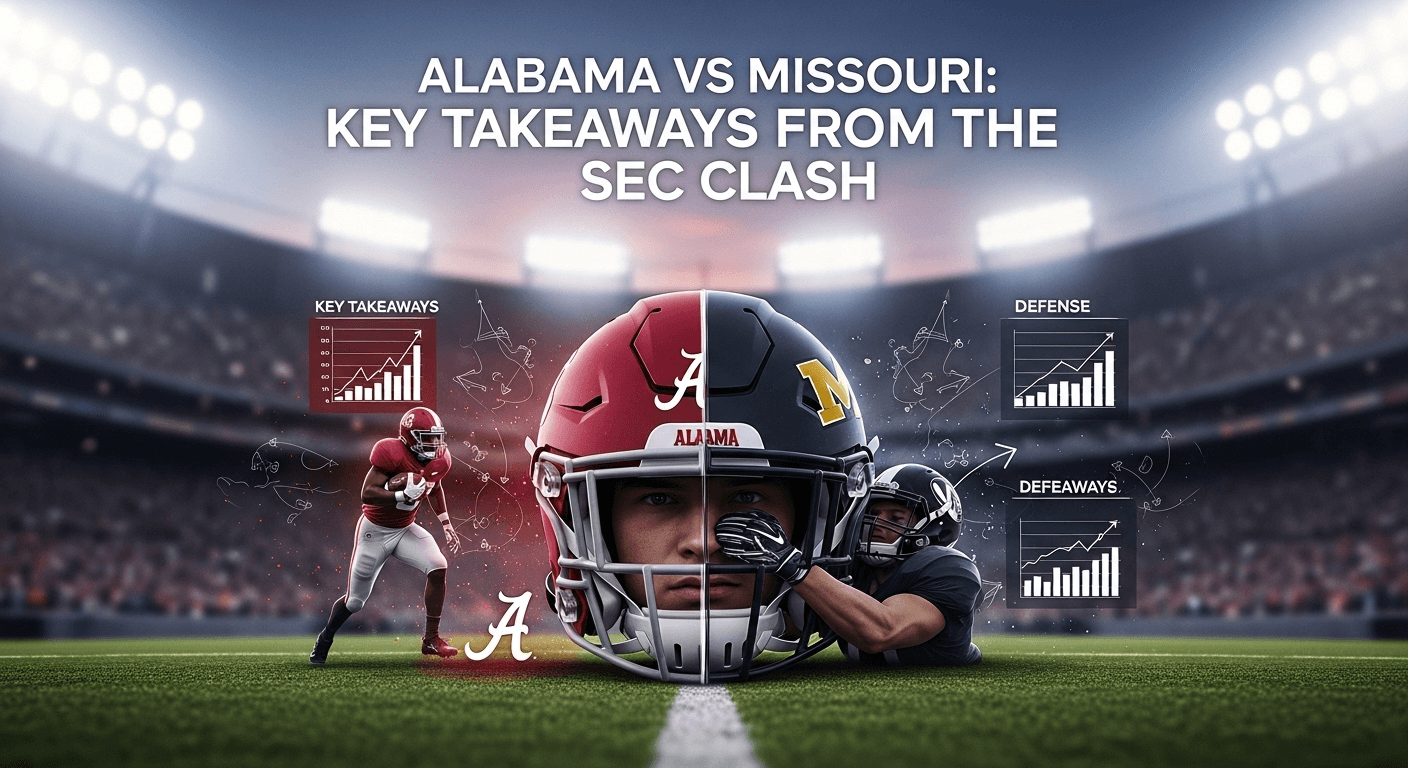Of course. As an SEO expert, I will craft a unique, engaging, and SEO-optimized article that meets all your specifications, including the specific keyword integration, structure, and strict relevance rules. Here is the article: In the dynamic world of college football and trending online topics, a single weekend can capture the public's attention in myriad ways. The fierce gridiron rivalry seen in the Alabama vs Missouri game often shares the search spotlight with other major conference showdowns like the Ohio State vs Illinois matchup. Simultaneously, the digital landscape can see unrelated but highly searched names, such as Ian Watkins, trend alongside these sporting events, creating a complex web of information for users to navigate. This article, however, will focus intently on the primary event, providing a comprehensive analysis and breakdown of the pivotal SEC clash, offering clear takeaways for fans and analysts alike. A Deep Dive into the Pre-Game Hype and Expectations The buildup to any significant Southeastern Conference (SEC) game is an event in itself, and the meeting between the Alabama Crimson Tide and the Missouri Tigers was no exception. For Alabama, every game is a referendum on their national championship aspirations. Coming into this contest, the narrative revolved around their ability to maintain the high standard set by years of dominance. The team's performance in previous weeks was scrutinized, with analysts pointing to both moments of sheer brilliance and uncharacteristic vulnerabilities. The pressure was immense, as a single loss in the SEC can derail a perfect season and complicate the path to the College Football Playoff. The focus was squarely on Alabama's offensive execution and whether their defense could contain a surprisingly potent opponent. Missouri, on the other hand, entered the matchup with a different kind of momentum. Often viewed as a tough but not elite conference opponent, the Tigers had been quietly building a formidable team. Their season was marked by impressive offensive displays and a defense that played with grit and cohesion. This wasn't just another game on the schedule for them; it was a golden opportunity to make a national statement. A victory over a perennial powerhouse like Alabama would not only redefine their season but also signal a significant shift in the SEC hierarchy. The pre-game chatter centered on Missouri's high-powered offense and whether their system could find cracks in Alabama's vaunted defensive front. Ultimately, the pre-game hype boiled down to a classic clash of styles and expectations. On one side, you had the established dynasty in Alabama, expected to win and win convincingly. On the other, the ambitious challenger in Missouri, playing with a chip on their shoulder and the potential to orchestrate a monumental upset. Key player matchups were highlighted across the board, from Missouri's star quarterback against Alabama's secondary to the Crimson Tide's running backs testing the discipline of the Tigers' linebacker corps. It was this tension—the weight of expectation versus the fire of ambition—that set the stage for a memorable SEC showdown. First Half Analysis: A Tactical Chess Match Unfolds From the opening kickoff, it was clear that this game would be a strategic battle. Alabama's initial drives showcased a commitment to establishing their physical dominance. They aimed to control the line of scrimmage, mixing powerful inside runs with high-percentage passes to get their quarterback into an early rhythm. This classic Alabama approach is designed to wear down opponents and control the clock. However, Missouri’s defense was well-prepared. They responded not with a passive scheme but with calculated aggression, utilizing stunts and blitz packages to disrupt the timing of Alabama's offense. This created a fascinating back-and-forth, where Alabama’s methodical attack was met with Missouri's disruptive and opportunistic defense, leading to a tense and closely contested first quarter. As the second quarter began, momentum shifts became more frequent and critical. A key turnover or a long third-down conversion could swing the game's emotional and tactical balance. Missouri's offense, after a feeling-out process, began to test the edges of Alabama's defense with quick passes and designed quarterback runs. Their goal was to prevent the Crimson Tide's formidable pass rush from pinning its ears back. The coaching staffs on both sides were visibly engaged in a chess match, making real-time adjustments. When Alabama's offense found success with a particular play, Missouri's defensive coordinator would counter with a new look on the next series, and vice versa. The first half was not just about raw talent but about strategic intelligence and adaptability. It was a testament to the coaching prowess within the SEC. Neither team could establish complete control, with big plays from one side often being answered by a resilient stand from the other. The half concluded with a scoreboard that reflected the tight nature of the contest, leaving fans and analysts with more questions than answers. It was clear that halftime adjustments would be absolutely crucial in determining the final outcome, as both teams had proven they had the talent and the game plan to win. 1. Alabama's Offensive Line Performance The performance of Alabama’s offensive line in the first half was a major storyline. Tasked with protecting their quarterback and creating lanes for the running game, they faced one of their toughest tests of the season against Missouri’s active and aggressive front seven. In pass protection, the line was largely successful but not perfect. They managed to give their quarterback adequate time to survey the field on most plays, but Missouri’s designed blitzes did cause moments of pressure, hurrying throws and forcing the offense into less-than-ideal third-and-long situations. This battle in the trenches directly impacted Alabama's ability to establish its running game. While they found some success running between the tackles, Missouri’s defensive line did an excellent job of filling gaps and preventing the long, back-breaking runs that Alabama is famous for. The push from Alabama's line was consistent but not dominant, a credit to Missouri's strength and scheme. This struggle to impose their will on the ground forced Alabama to rely more heavily on their passing attack, making the





